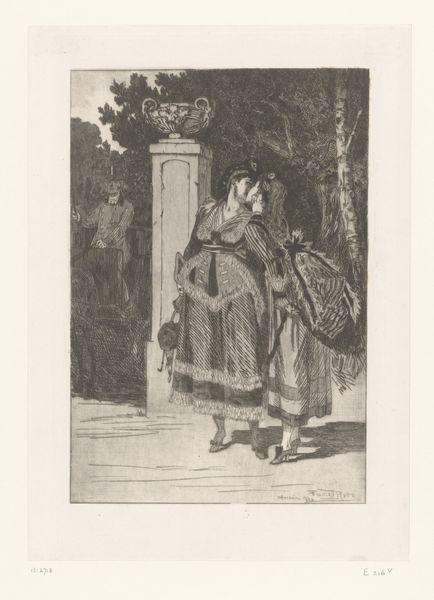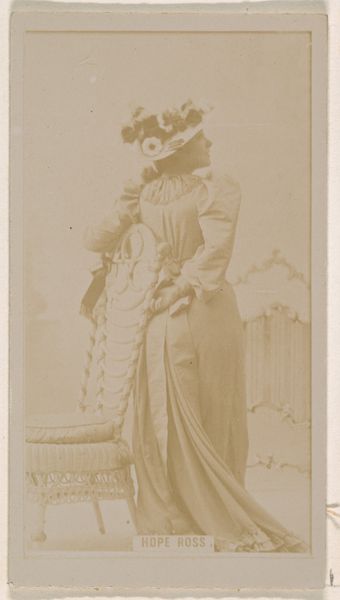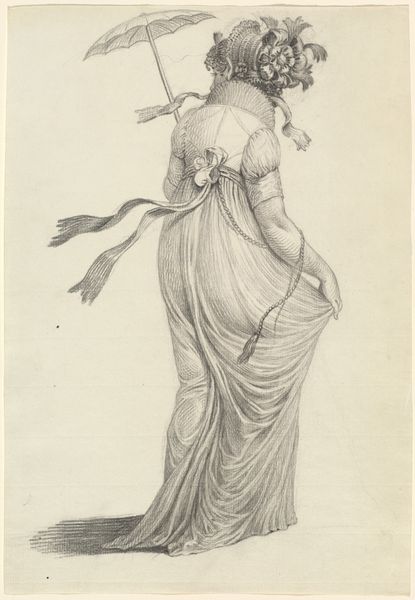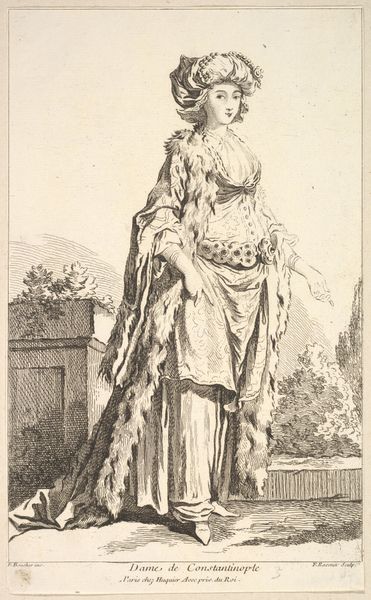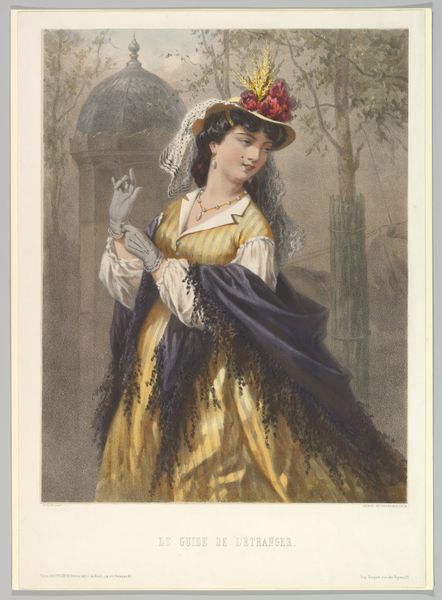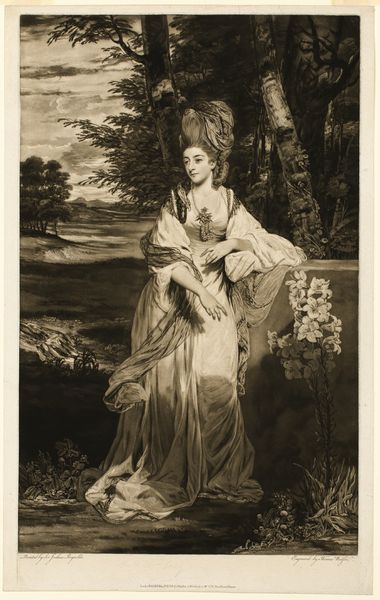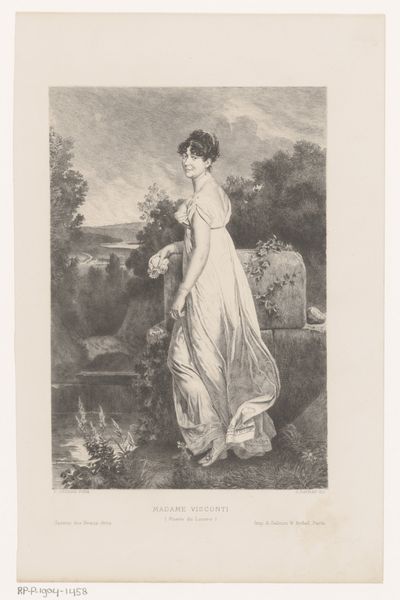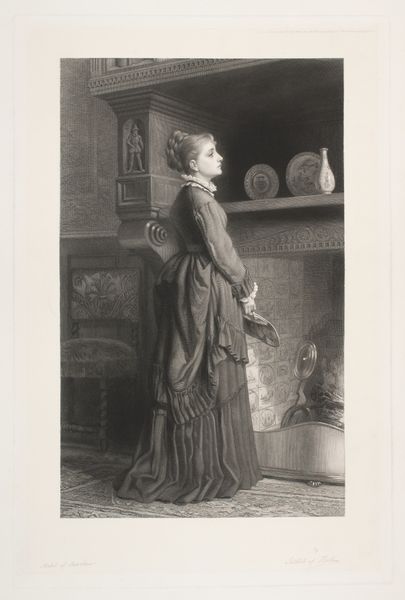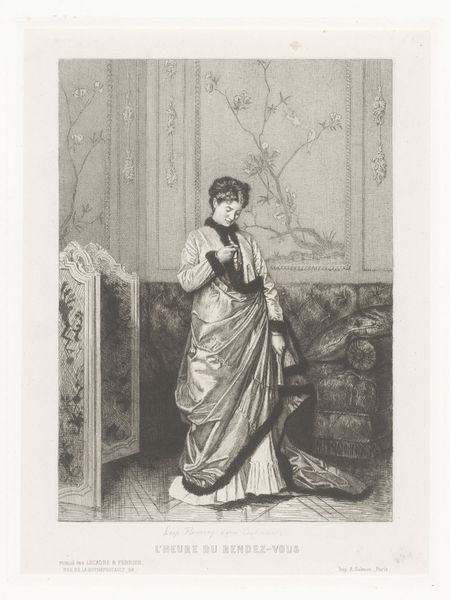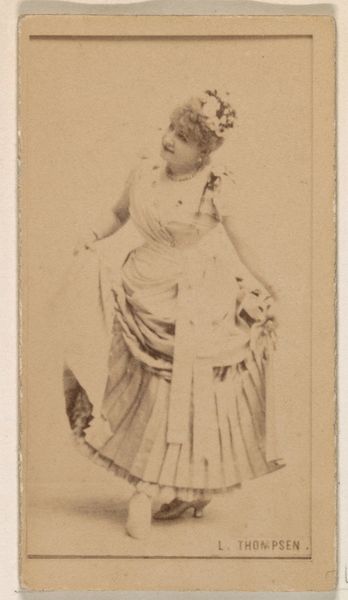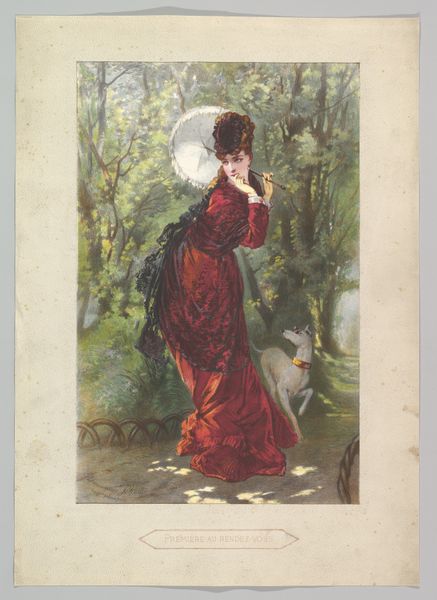
Dimensions: 732 mm (height) x 478 mm (width) (plademaal)
Curator: This is "The Farewells," an engraving by Joel Ballin, created between 1871 and 1882, held in the collection of the SMK, the National Gallery of Denmark. Editor: Oh, it’s so…wistful. The way they’re holding hands through the gate, the heavy clothes against the garden’s airy foliage. Like a stage set for heartbreak, isn't it? Curator: Indeed. Ballin's skill as an engraver is undeniable here. The gradations of tone, achieved solely through lines and dots, create depth and texture, mimicking the luxurious fabrics and verdant garden with precision. The very act of reproduction itself, of making a scene of parting indefinitely repeatable through printing, subtly underscores the repetitive nature of goodbyes throughout history and society. Editor: See, for me, it feels more like capturing a fleeting feeling. That moment where hope and dread dance a tango, you know? Look at the way she’s angled her head, avoiding his gaze, her hand almost resisting his. It's that universal feeling when words can't convey what the heart already knows. It's love locked up by destiny or circumstances. Curator: And this points to the economic constraints of the subjects within. Their clothes speak to a level of societal stature, but also to the very specific codes which dictate conduct, dress and presentation. Are we truly seeing "The Farewells" of choice, or the separation dictated by something larger than both of them? How many hands created the dress itself, and under what circumstances? Editor: Goodness, yes. He seems rather...confined, boxed in by those railings. As for her, all those ruffles and frills; imagine the layers of meaning sewn into each stitch. It's a poignant tableau of privilege, restriction, and unspoken longing. You can almost feel the years between them just suspended in the air! It feels a little trapped to be a portrait of such an outwardly Romantic gesture when so much else is tied into the image too. Curator: It’s through analyzing these artistic decisions - the deliberate choice of engraving, the display of finery versus implied labour - that we gain a fuller picture, I think, of "The Farewells". Ballin provides us with both an intimate scene of a couple as well as subtle commentary on Victorian society through its materials. Editor: And for me, it lingers as an invitation into quiet, human connection—a brief intersection of lives forever on the verge. A testament to how art allows to connect deeply and find reflections of our shared human experience.
Comments
No comments
Be the first to comment and join the conversation on the ultimate creative platform.
